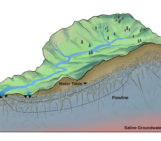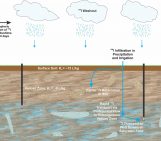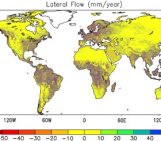
By Tom Gleeson, Adam Ward, Anne Jefferson, and Skuyler Herzog
Amidst the COVID-19 pandemic, many of us are in the same situation: all of a sudden ‘pivoting’ to online teaching, which is probably better called ‘emergency remote teaching’ since few of us have the background, training, and resources to purposefully develop online courses. Fortunately, this response has also catalyzed the open sharing of educational resources to support fellow instructors and their students in our community. Some notable resources from our community include:
- A new Educational Resources collection on CUAHSI HydroShare includes several in-class activities and at least four complete courses, all available free for use by the community.
- The HydroLearn platform which has complete courses and modules that you can use or adapt to your own setting.
- Hydrology Guest Lecture Database which is a list of potential guest lectures on diverse topics.
- AGU Hydrology Section Student Subcommittee blog post on Teaching Resources for Students and Instructors.
- Young Hydrologic Society online teaching resources.
Another emerging resource is a compendium of videos, websites, games, and articles for a wide variety of hydrology and water resources classes. The compendium will encourage students to a) get course content from diverse sources, voices, and perspectives; b) relate course content to their lives; and c) practice course content in different, engaging ways. The quality and veracity of content online are hugely variable, but we are striving to only reference ‘quality’ sources (in quotes because we know this is relative and subjective) such as universities and governmental organizations while balancing this with also striving to find content that students can relate to. The compendium was started by Tom who is teaching CIVE 340 at the University of Victoria – a required 3rd-year civil engineering course starting and ending with water sustainability, with a core of hydrology. This class will be fully online in the fall, and he plans to include both synchronous classes and asynchronous student-led activities. As this course develops, he will share this collection of resources in a Water Underground blog post and on CUAHSI HydroShare, and keep the compendium as an evolving community resource if others feel it is useful. Go check and out the compendium and start adding resources!
To continue watering these grassroots efforts (pun intended – we’re hydrologic nerds after all!) here are four easy ways to contribute:
- Spend a few hours contributing to a compendium of videos, websites, games and articles for hydrology and water resources classes.
- Upload teaching materials to the new Educational Resources collection on CUAHSI HydroShare. This is open for contributions and the quick-start guide can have you sharing your materials in 15 minutes.
- Sign up for the Hydrology Guest Lecture Database. There’s no obligation, but folks can reach out to you to request a guest lecture on topics of your choosing.
- Contribute an abstract to the AGU session “Online Hydrology Education: Lessons Learned from Designed and Impromptu Remote Instruction” by July 29. Note that the conference will be online and education sessions don’t count towards your limit of first-authored abstracts.




